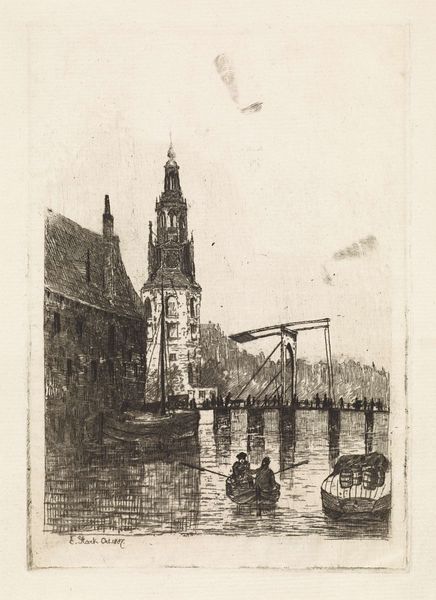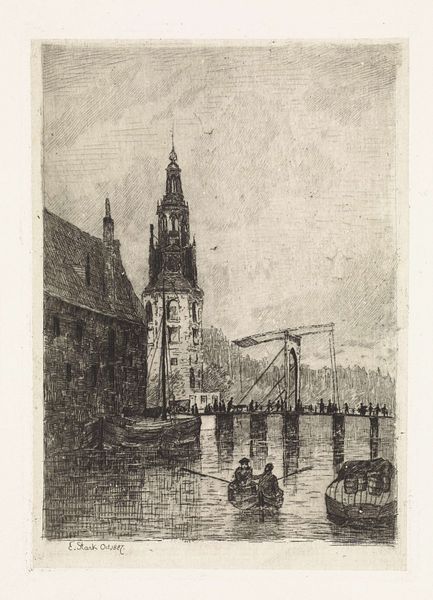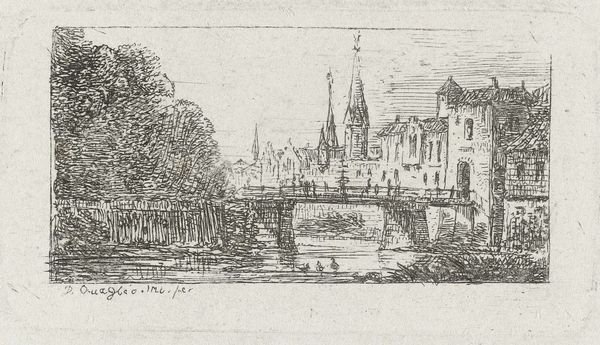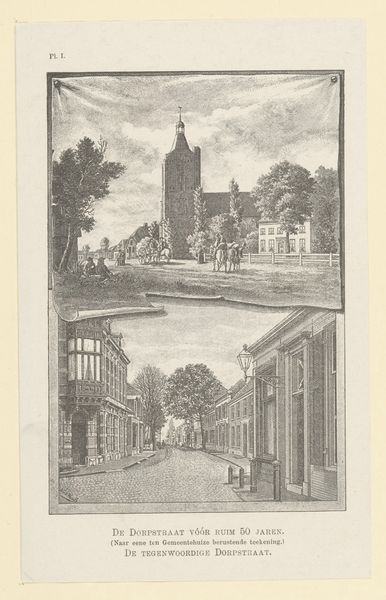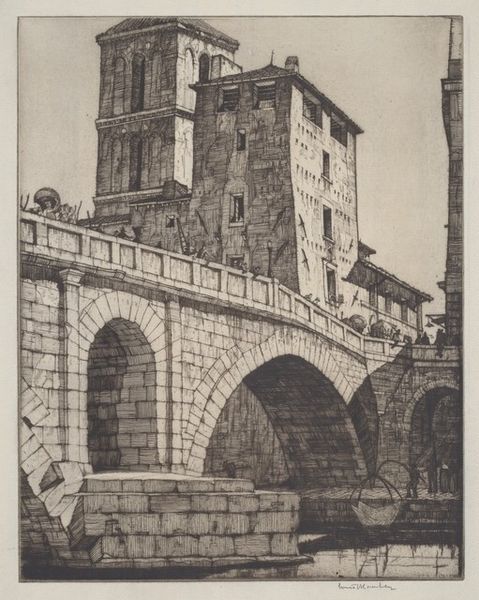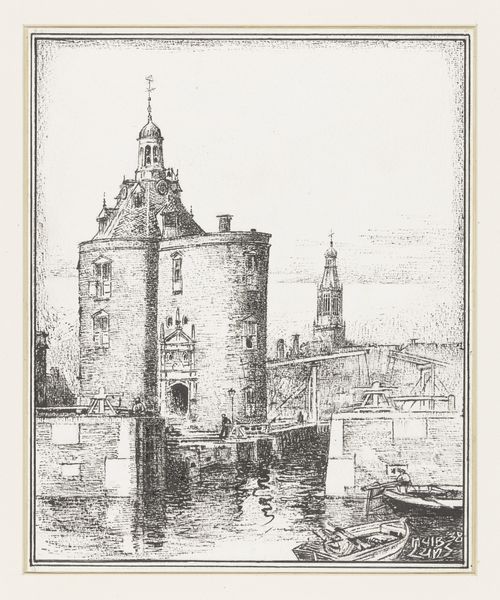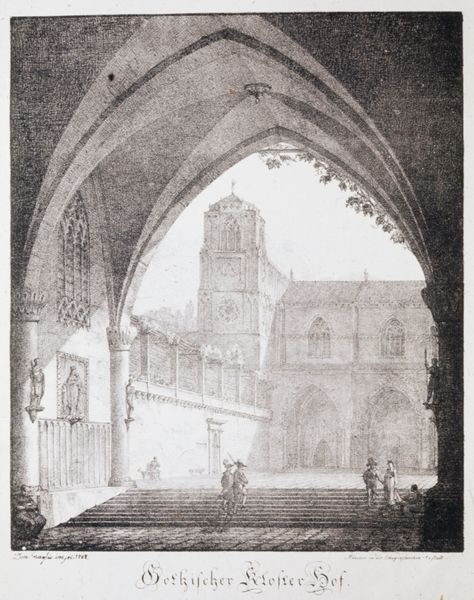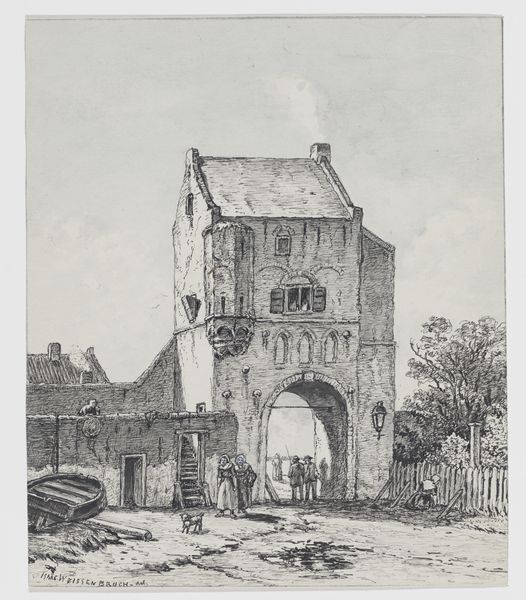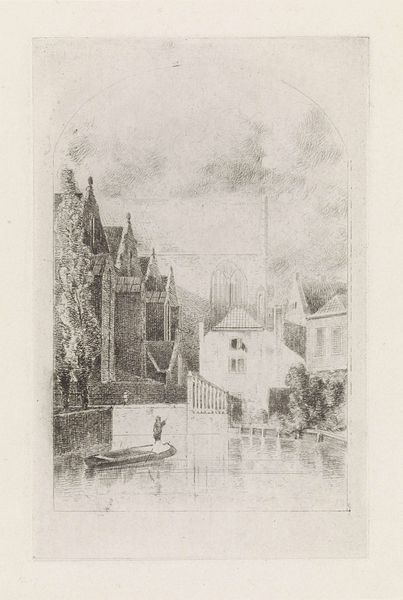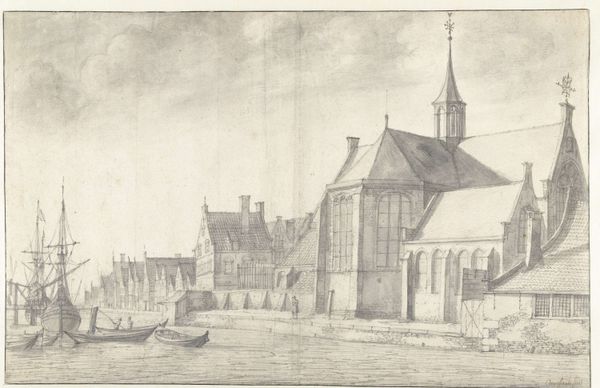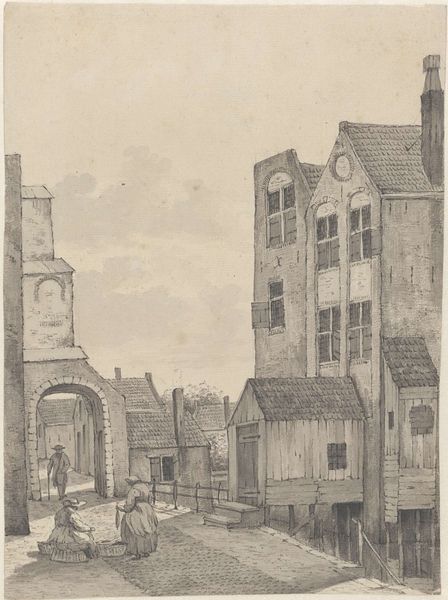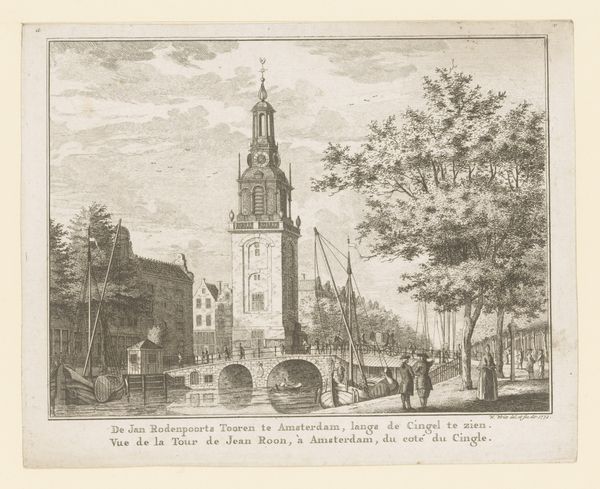
print, etching
# print
#
etching
#
landscape
#
19th century
#
cityscape
#
realism
Dimensions: height 178 mm, width 123 mm
Copyright: Rijks Museum: Open Domain
Curator: Elias Stark created this etching, "Montelbaanstoren te Amsterdam," in 1887. It’s part of the Rijksmuseum's collection. What strikes you most upon seeing it? Editor: Immediately, I'm drawn to the almost ethereal quality of the light. It feels hazy, almost dreamlike, despite the very clear architectural rendering. Curator: That haze, I think, reflects the rapidly industrializing world creeping into Amsterdam's consciousness at that time. While Stark renders the tower with precise detail, it's framed by this feeling of atmospheric change. Urban development reshaped class dynamics and traditional livelihoods, influencing artistic perspectives like Stark’s. Editor: I see that now; there's a definite contrast between the solid, rooted tower and the shimmering reflections in the water. Water, of course, always signals change, fluidity... I'm thinking also of how towers act as potent symbols of power and history. How would the burgeoning working class view this established emblem? Curator: Precisely. This tower, initially built for defense, evolved into a potent symbol of Amsterdam's civic identity, but, its meanings would certainly shift in the social context. Editor: And look how the people on the bridge are depicted: anonymous figures in procession, perhaps representing both connection and the potential anonymity of modern urban life. The two figures in a small boat stand out in stark contrast as the center of the composition. The boat sits almost perfectly centered with all its rich psychological associations. Curator: Considering the era, gender probably plays a part; who has access to those iconic structures? Whose histories and labour are omitted from the frame? The tower stands but society's reflections distort or enhance our views about civic authority. Editor: True, the absence is as potent as what is present. It does make you wonder, doesn't it? What narratives lie submerged, just like those watery reflections? Curator: It does indeed. These cityscapes can tell a lot more. They reveal both grand achievements and lingering challenges inherent in societal growth and structural biases.
Comments
No comments
Be the first to comment and join the conversation on the ultimate creative platform.
